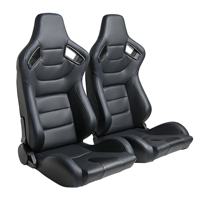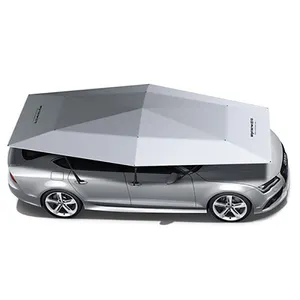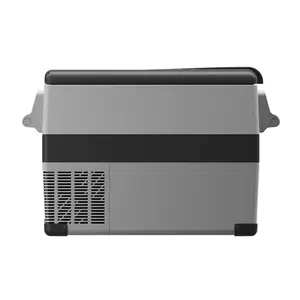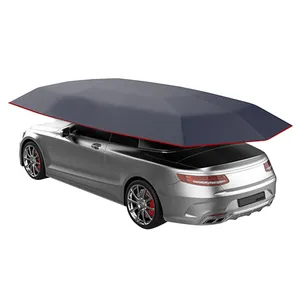Popular in your industry

























































Related Searches:












































































































































Top categories
About carbon fiber racing seat
In the high-octane world of auto racing, every detail counts towards crossing the finish line first. One such critical detail is the driver's seat—where the crucial interface between human and machine takes place. Upgrading to carbon fiber racing seats is not just a matter of style; it's a strategic move to maximize speed and comfort. This article delves into the evolution of racing seats, the unique properties of carbon fiber, and how these seats can give racers the competitive edge they need. From the early bucket seats of military vehicles to the sophisticated carbon fiber options available today, we explore the journey of racing seats and their impact on performance and safety.
The Evolution of Racing Seats: From Basic Buckets to Carbon Fiber
The concept of racing seats has evolved significantly from the early bucket seats designed for single occupants, providing a snug fit to enhance driver stability. Originating before World War II, bucket seats were initially used in lightweight, open-topped military vehicles in Germany. These early versions were rudimentary, offering basic support during high-speed maneuvers. Over time, the design of bucket seats transitioned from these simple forms to more sophisticated, performance-oriented seats in sports cars. American car culture in the post-war era embraced bucket seats as symbols of sportiness and luxury, a trend that began with European car influences and later became a staple in American sports cars. The introduction of sporty compact cars further cemented the popularity of bucket seats, which were equipped with features like center consoles and gear shifters. This evolution set the stage for the development of advanced racing seats, including those made from cutting-edge materials like carbon fiber, which are now prized for their combination of strength, lightness, and durability, offering an unmatched competitive edge in racing performance.
Understanding Carbon Fiber: Composition and Manufacturing
Carbon fibers are notable for their diameters, which typically range from 5 to 10μm, and are predominantly composed of carbon atoms. These fibers are produced through a meticulous process involving the oxidation and carbonization of polyacrylonitrile (PAN) fibers in specialized furnaces. The unique structure of carbon fibers is characterized by the arrangement of long, flat microcrystals that are aligned parallel to the axis of the fiber. This alignment is crucial as it contributes to the distinctive properties of carbon fibers.
The manufacturing process of carbon fibers allows for the creation of fibers with varied characteristics by adjusting parameters such as temperature and time. This flexibility in production leads to the availability of fibers with different qualities, including those with high or intermediate modulus and high tenacity. These variations cater to specific demands and applications, making carbon fibers a versatile material in the realm of composites.
In the form of yarn or tow, carbon fibers are bundled into several thousand strands. For instance, a 12K tow consists of 12,000 individual fibers. These tows are available in different sizes, ranging from 1K to 48K, and are typically wound onto spools. Carbon fiber fabrics are then woven from these tows and are subsequently used with a matrix material, such as epoxy or polyester resin, or ceramics, to fabricate composite parts that boast a high strength-to-weight ratio.
The Competitive Edge: How Carbon Fiber Seats Enhance Racing Performance
Carbon fiber racing seats offer a significant advantage in performance tuning, primarily due to their weight reduction capabilities. The use of carbon fiber, combined with a supportive backing, results in a seat that is substantially lighter than standard factory seats. This reduction in weight can be crucial in racing, where every kilogram saved contributes to faster acceleration and improved handling. The ability to attach bucket seat rails using M8 bolts also adds a level of customization and adaptability for various vehicle setups, ensuring that the seats can be integrated into different racing systems without compromising on stability or safety.
Types of Carbon Fiber Racing Seats Available on Alibaba.com

Alibaba.com showcases a diverse range of carbon fiber racing seats, catering to various preferences and vehicle requirements. Among the offerings, customers can find classic car racing seats designed with a focus on both aesthetics and performance. The seats with polyurethane backing and double sliders are engineered for automobile use, emphasizing sportiness and utility. For those seeking customization, there are options like the adjustable racing seat, which provides a balance between comfort and adaptability.
The selection extends to specialized models that combine the allure of shining aesthetics with the strength of carbon fiber for a simulating racing experience. Racing car bucket seats that cater to professional racing standards, ensuring compliance and safety, are also available. For enthusiasts desiring a touch of luxury, customizable color and material options are available, including sturdy non-adjustable leather racing bucket seats.
Moreover, Alibaba.com includes seats designed for specific car models, and universal options that fit a range of vehicles. The universal real carbon fiber racing seat brackets with adjustable sliders offer flexibility for various car interiors. For those concerned with environmental impact, there are racing seats made from eco-friendly carbon fiber PVC, featuring adjustable angles and double sliding buckles for enhanced ergonomics.
Key Features and Benefits of Upgrading to Carbon Fiber Seats
Carbon fiber seats offer a significant advantage in terms of comfort and weight reduction, which is particularly beneficial for car enthusiasts and racers. The material's lightweight nature contributes to an overall decrease in vehicle weight, leading to improved performance. Additionally, carbon fiber is known for its strength and durability, which can enhance the safety aspect of the seats.
These seats are not only functional but also aesthetically pleasing, often found in JDM and drifting cars that have been tuned and modified. The design of carbon fiber seats is tailored to provide a balance between comfort and the rigorous demands of racing environments.
While there are various advantages, it's important to note that carbon fiber seats may come with certain drawbacks. However, for those prioritizing performance and a racing aesthetic, the benefits of upgrading to carbon fiber seats can outweigh these considerations. It's crucial for buyers to ensure compatibility with their vehicle's attachment system and to be mindful of the seat sizes to guarantee a proper fit within the car's cabin.
Installation and Compatibility: What Buyers Should Know
When considering the installation of a carbon fiber racing seat, it's essential to understand the compatibility and installation process. The use of adapter brackets simplifies the installation, allowing for a reversible process that doesn't permanently alter the vehicle. These brackets align with the car's original chassis bolt holes, providing a stable base for the new seat.
For a precise fit, it may be necessary to drill the adapter bases, ensuring the holes align with the seat's mounting points. It's crucial to use the correct hardware, like Grade 8 or Metric 10.9 bolts, and to follow proper torque specifications. Including fender washers for any enlarged or custom-drilled holes can provide additional stability.
The seat belt receptacle, typically mounted on the seat in modern vehicles, should be reattached to the new seat, ensuring it's positioned for safety and comfort. Careful routing and securing of the seat's electrical cable are also necessary to maintain functionality of seat sensors and controls.
Finally, after installing the seat, it's advisable to verify all electrical connections and clear any error codes related to the seat sensors, using the appropriate diagnostic tools. This step ensures that the vehicle's safety systems remain fully operational.
Safety and Comfort: A Dual Focus in Carbon Fiber Seat Design
The carbon fiber racing seat exemplifies the dual focus on safety and comfort in carbon fiber seat design. The seat's carbon fiber shell is molded in an autoclave, ensuring a robust structure that provides superior protection in a lightweight form. The inclusion of large shoulder harness slots accommodates various heights, catering to a wide range of users and enhancing the safety aspect by ensuring a proper fit for harnesses. Lateral leg support is bolstered by high side bolsters, which are crucial in maintaining the driver's position during high-speed maneuvers, thereby offering both stability and comfort. The shaped security headrest is another feature that contributes to safety by providing additional head support, which is essential during impacts. For comfort, the seat includes a removable back cushion, base, and split leg rests, allowing for individual seating comfort adjustments. The use of breathable materials adds to the comfort by reducing heat buildup, which is a common issue during extended periods of racing. The seat's design also includes non-slip surfaces for improved grip, minimizing movement and enhancing the driver's control over the vehicle. This thoughtful integration of safety and comfort features makes the carbon fiber racing seats a prime example of the sophisticated engineering behind these performance seats.
Maintenance and Longevity of Carbon Fiber Seats
Caring for carbon fiber racing seats involves similar maintenance practices as other carbon fiber vehicle components. The material, while known for its durability and strength, requires a gentle approach to cleaning and maintenance. Regular washing with suitable products, like those used for painted surfaces, is recommended. To maintain the aesthetic and structural integrity, it's advisable to start with the least aggressive cleaning methods, escalating only as necessary.
For deeper cleaning, a clay bar can be used periodically to remove embedded contaminants, ensuring the surface remains smooth and free of particles that could mar its finish. When it comes to addressing swirls or restoring gloss, fine grade polishes coupled with soft polishing pads are preferred. These products are designed to enhance the carbon fiber's appearance without causing damage.
After polishing, sealing the carbon fiber with a quality sealant can add an extra layer of protection, enhancing gloss and providing a barrier against environmental elements. This step is crucial, especially for racing seats exposed to the rigors of the track and varying weather conditions. The key is to use products and techniques that are safe for carbon fiber, avoiding harsh chemicals and abrasive tools that could compromise the material's integrity.
Conclusion

The pursuit of speed and safety in racing converges on the choice of seating. Carbon fiber racing seats represent the pinnacle of this convergence, offering a blend of lightweight construction, durability, and ergonomic design tailored for the racetrack. As we've seen, the evolution from basic bucket seats to advanced carbon fiber options has been driven by the relentless quest for performance. The benefits of upgrading are clear: reduced weight for faster acceleration, enhanced safety features, and customizable comfort. Installation considerations and maintenance practices ensure longevity and functionality, while the variety of seats available on platforms like Alibaba.com caters to a wide range of preferences and vehicle specifications. In sum, for those committed to the racing craft, investing in carbon fiber racing seats is an investment in their vehicle's performance and their own competitive edge.




























